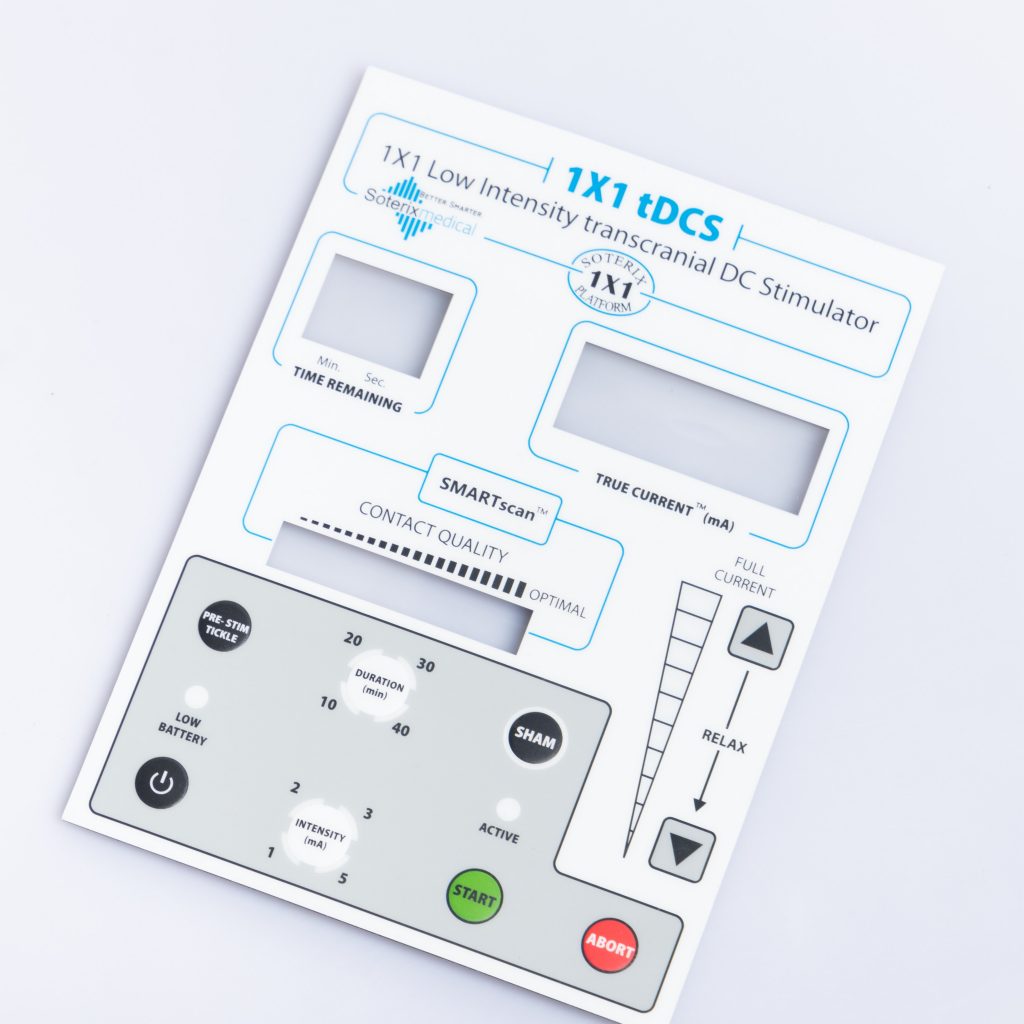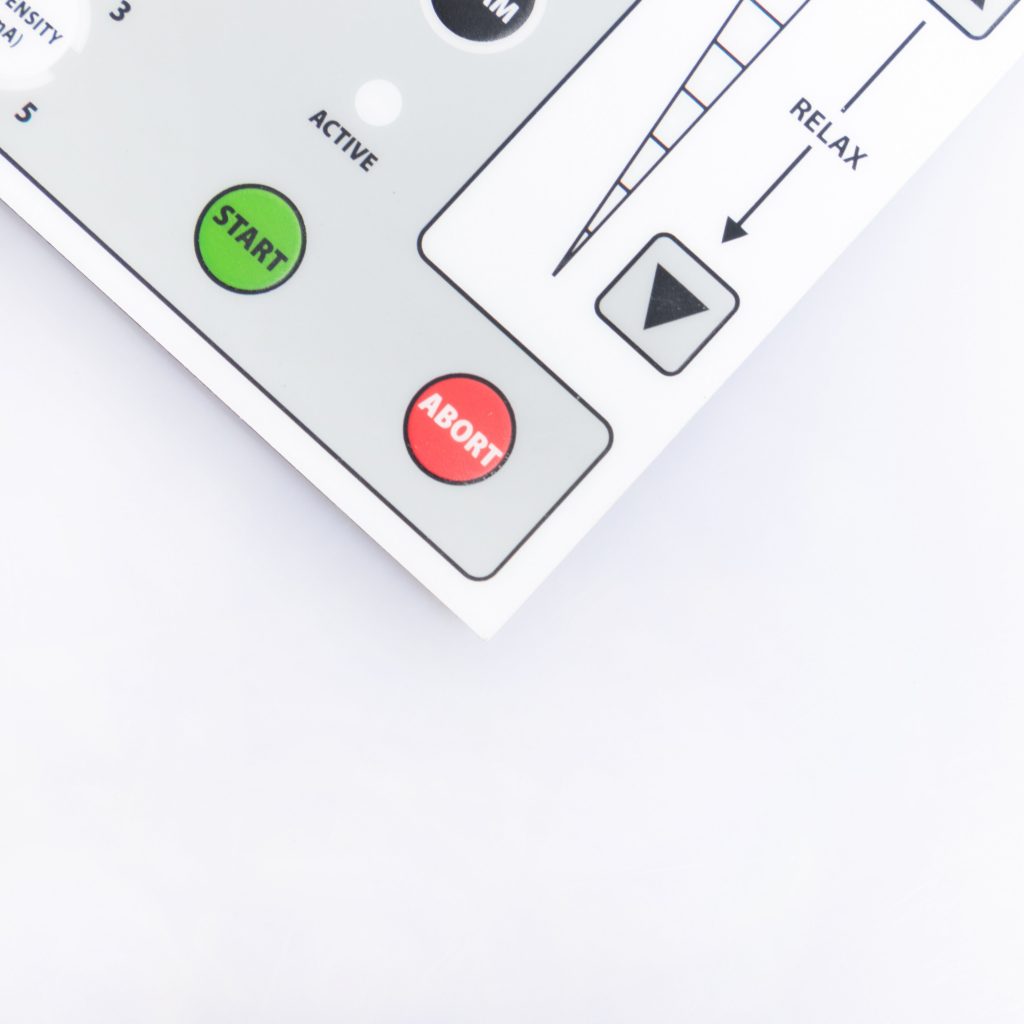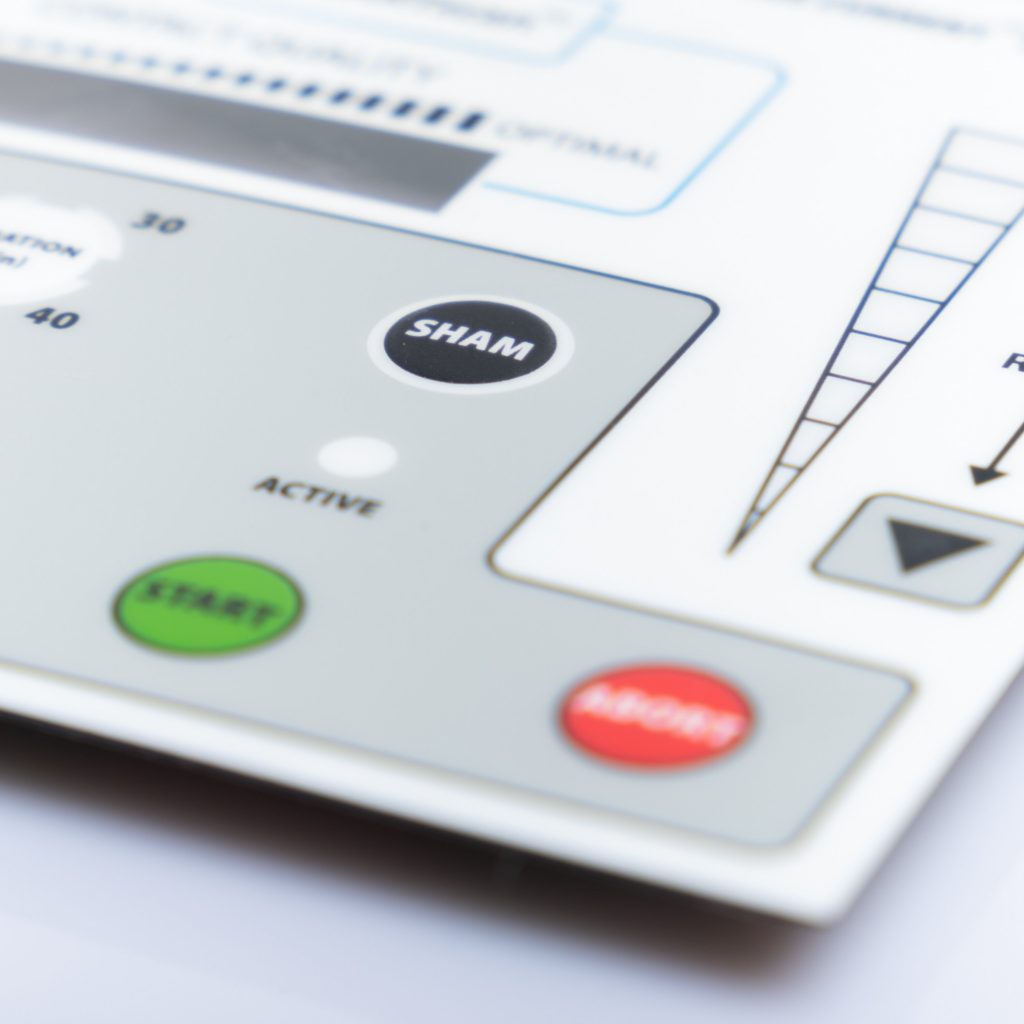The material used for the graphic overlay in a membrane switch is not just a superficial layer; it plays a pivotal role in the overall performance, durability, and user experience of the switch. Here’s an in-depth look at how different aspects of the overlay material can significantly impact the switch’s functionality:
Durability and Environmental Resistance
- Materials like polyester and polycarbonate are commonly used due to their resilience.
- Polyester excels in its resistance to environmental stressors such as extreme temperatures and corrosive chemicals. This makes it ideal for industrial applications where switches are exposed to harsh conditions.
- Polycarbonate, while slightly less resistant to chemicals, offers excellent clarity and impact resistance, beneficial for consumer electronics where visual appeal and durability are paramount.
Tactile Feedback and Flexibility
- The tactile response, crucial for user satisfaction, is greatly influenced by the overlay material’s flexibility and thickness.
- A material that is too rigid might hinder the tactile sensation, whereas an overly flexible material might not protect the underlying circuit effectively.
- The right balance ensures a comfortable and responsive user experience, especially in devices where the tactile feel is a significant part of the interface.
Optical Properties for Backlit Applications
- For membrane switches requiring backlighting, the material’s transparency and color consistency are crucial.
- The overlay must evenly distribute light and maintain color integrity, ensuring that displays and indicators are clear and readable under different lighting conditions.
Surface Texture and User Interaction
- The surface texture, whether matte, glossy, or textured, affects both the aesthetic and practical aspects of the switch.
- A glossy finish may look appealing but can attract fingerprints and glare, while a matte finish offers a more consistent appearance and reduces glare.
- The chosen texture also impacts cleaning ease and the ability to conceal minor wear and scratches.
Printability and Graphic Durability
- High-quality and durable printing on the overlay is essential for conveying information and enhancing aesthetics.
- The material should allow for crisp, vibrant printing of graphics and text that remain intact through regular use.
- It’s also vital that the printed graphics adhere well to the material, resisting wear and tear over time.
Flexibility for Conforming Designs
- In applications where the overlay needs to mold to non-flat surfaces or maintain flexibility during use, the material’s pliability is key.
- It should be able to bend or stretch without damaging the underlying circuits or the printed graphics on the surface.
Thickness and Weight Considerations
- The material’s thickness influences the tactile feel and the weight of the device.
- Thinner materials might be lighter and more sensitive but offer less protection, while thicker materials can provide more durability at the cost of increased weight and reduced touch sensitivity.
In conclusion, the choice of material for a graphic overlay in a membrane switch is a complex decision balancing functionality, user experience, and environmental factors. The right material choice enhances the switch’s performance, ensuring it meets the demands of its application effectively and reliably.


